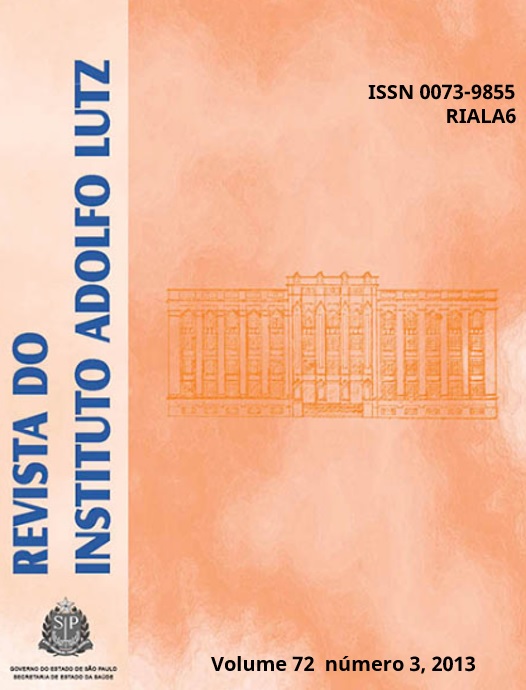Resumo
O objetivo deste trabalho foi verificar a adequação dos nutricosméticos contendo carotenoides em sua formulação em relação aos teores de β-caroteno, luteína, licopeno e zeaxantina, considerando-se as quantidades declaradas pelos fabricantes. Dezenove nutricosméticos foram adquiridos no comércio varejista do município do Rio de Janeiro, em 2012. Duas metodologias de extração foram aplicadas, variando-se de acordo com o tipo de invólucro (cápsula), veículos (excipientes) e carotenoides presentes. A quantificação e determinação do perfil de carotenoides nas amostras foram realizadas por cromatografia líquida de alta eficiência com método validado e acreditado. Quatro amostras das 19 analisadas estavam dentro dos limites estabelecidos pelas Boas Práticas de Fabricação (90 a 110%). As demais amostras revelaram conteúdo inadequado de carotenoides e, consequentemente, falhas no controle de qualidade para a produção dos nutricosméticos. Desta forma, esta pesquisa demonstra que este setor deve ser objeto de atenção especial da vigilância sanitária, com necessidade de estabelecer legislação específica para regulamentar a fabricação, a rotulagem e a propaganda destes produtos.
Referências
1. Food and Agricultural Organization –FAO. Country information: Brazil: agriculture sector. 2009. [acessado 2012 maio 21]. Disponível em: [http://www.fao.org].
2. IBGE. Instituto Brasileiro de Geografia e Estatística. Levantamento sistemático da produção agrícola. São Paulo: IBGE, 2003. [acessado 2012 jun 10]. Disponível em: [http://www.sidra.ibge.gov. br/bda/].
3. Zhao Y, Tu K, Tu S, Liu M, Su J, Hou YP. A combination of heat treatment and Pichia guilliermondii prevents cherry tomato spoilage by fungi. J Food Microbiol. 2010;137(1):106-10.
4. Gusmão MTA, Gusmão SAL, Araújo JAC. Produtividade de tomate tipo cereja cultivado em ambiente protegido e em diferentes substratos. Hort Bras.2006;24(2): 431-6.
5. Wang Y, Bao Y, Shen D, Feng W, Yu, T, Zhang J, et al. Biocontrol of Alternaria alternata on cherry tomato fruit by use of marine yeast Rhodosporidium paludigenum. J Food Microbiol. 2008; 123(3):234-9.
6. Lapidot A, Romling U, Yaron S. Biofilm formation and the survival of Salmonella Typhimurium on parsley. J Food Microbiol. 2006;109(2):229-33.
7. Alvaro JE, Moreno S, Dianez F, Santos M, Carrasco G, Urrestarazu M. Effects of peracetic acid disinfectant on the postharvest of some fresh vegetables. J Food Engg. 2009;95(3):11-5.
8. Ruíz-Cruz S, Félix EA, Cinco MD, Osuna MAI, Aguilar GAG. Efficacy of sanitizers in reducing Escherichia coli O157:H7, Salmonella spp. and Listeria monocytogenes populations on fresh-cut carrots. Food Control. 2007; 18(11):1383-90.
9. São José JFB, Vanetti MCD. Effect of ultrasound and commercial sanitizers on natural microbiota and SalmonellaentericaTyphimurium on cherry tomatoes. Food Control. 2012; 24(1-2): 95-9.
10. Gogate PR, Kabadi AM. A review of applications of cavitation in biochemical engineering/biotechnology. Biochem Eng J. 2009; 44(1):60-72.
11. Brasil, Ministério da Agricultura, Pecuária e do Abastecimento. Instrução Normativa n° 62, de 26 de agosto de 2003. Métodos analíticos Oficiais para Análises Microbiológicas para controle de produtos de origem animal e água. Diário Oficial [da] República Federativa do Brasil.
12. AOAC. American Official of Analytical Chemists. Official methods of analysis of AOAC international. 18. ed. Washington, 2005.
13. Cao S, Hu Z, Pang B, Wang H, Xie H, Wu F. Effect of ultrasound treatment on fruit decay and quality maintenance in strawberry after harvest. Food Control. 2010;21(4):529-32.
14. Lu Y, Turley A, Dong X, Wu C. Reduction of Salmonella enterica on grape tomatoes using microwave heating. Int J Food Microbiol. 2011; 145(1): 349-52.
15. Fraeye I, Knockaert G, Van Buggenhout S, Duvetter T, Hendrickx M, Van Loey A. Enzyme infusion prior to thermal/high pressure processing of strawberries: mechanistic insight into firmness evolution. Innov Food Sci Emerg Technol. 2010;11(1):23-31.

Este trabalho está licenciado sob uma licença Creative Commons Attribution 4.0 International License.
Copyright (c) 2013 Fernanda Marques Peixoto, Renata Galhardo Borguini, Allien Monique Rosa Machado, Ana Cristina Miranda Senna Gôuvea, Sidney Pacheco, Ronoel Luiz de Oliveira Godoy
